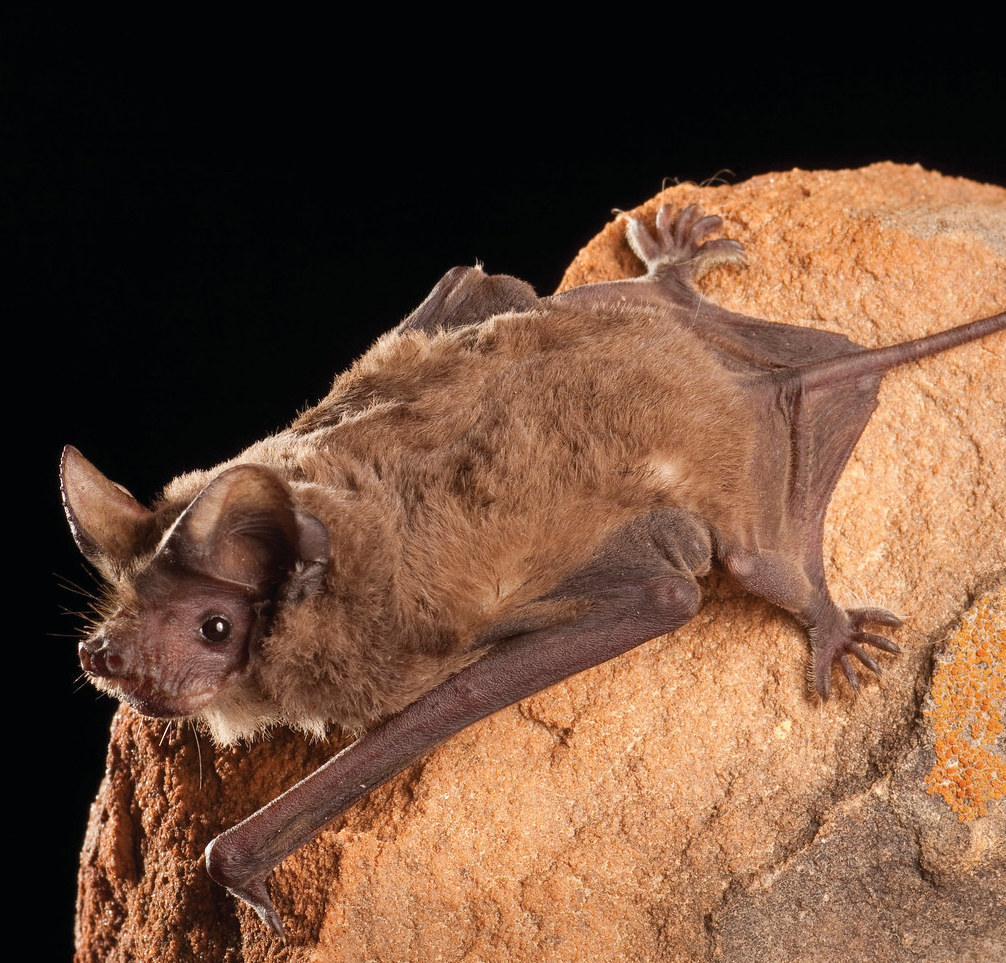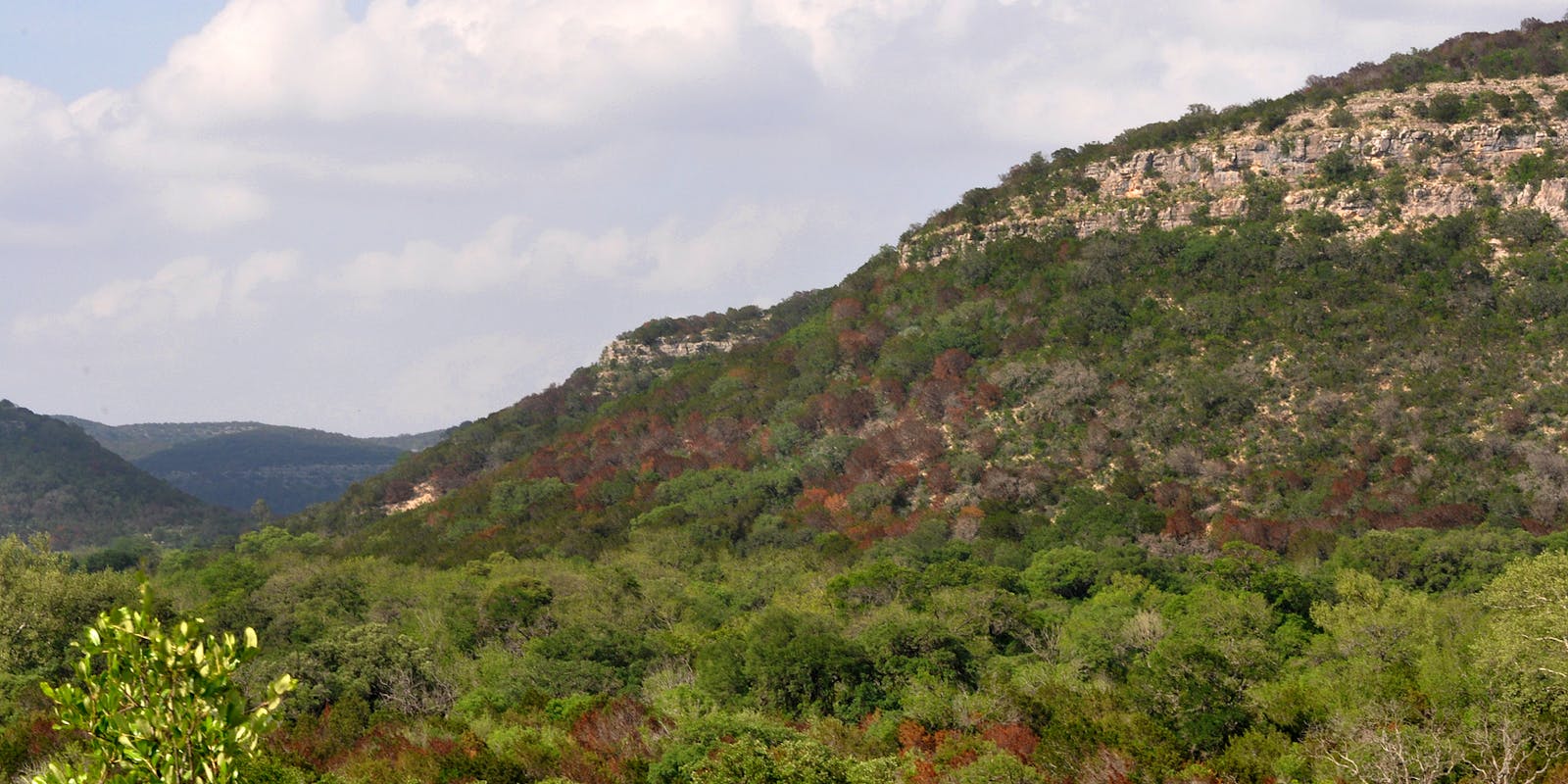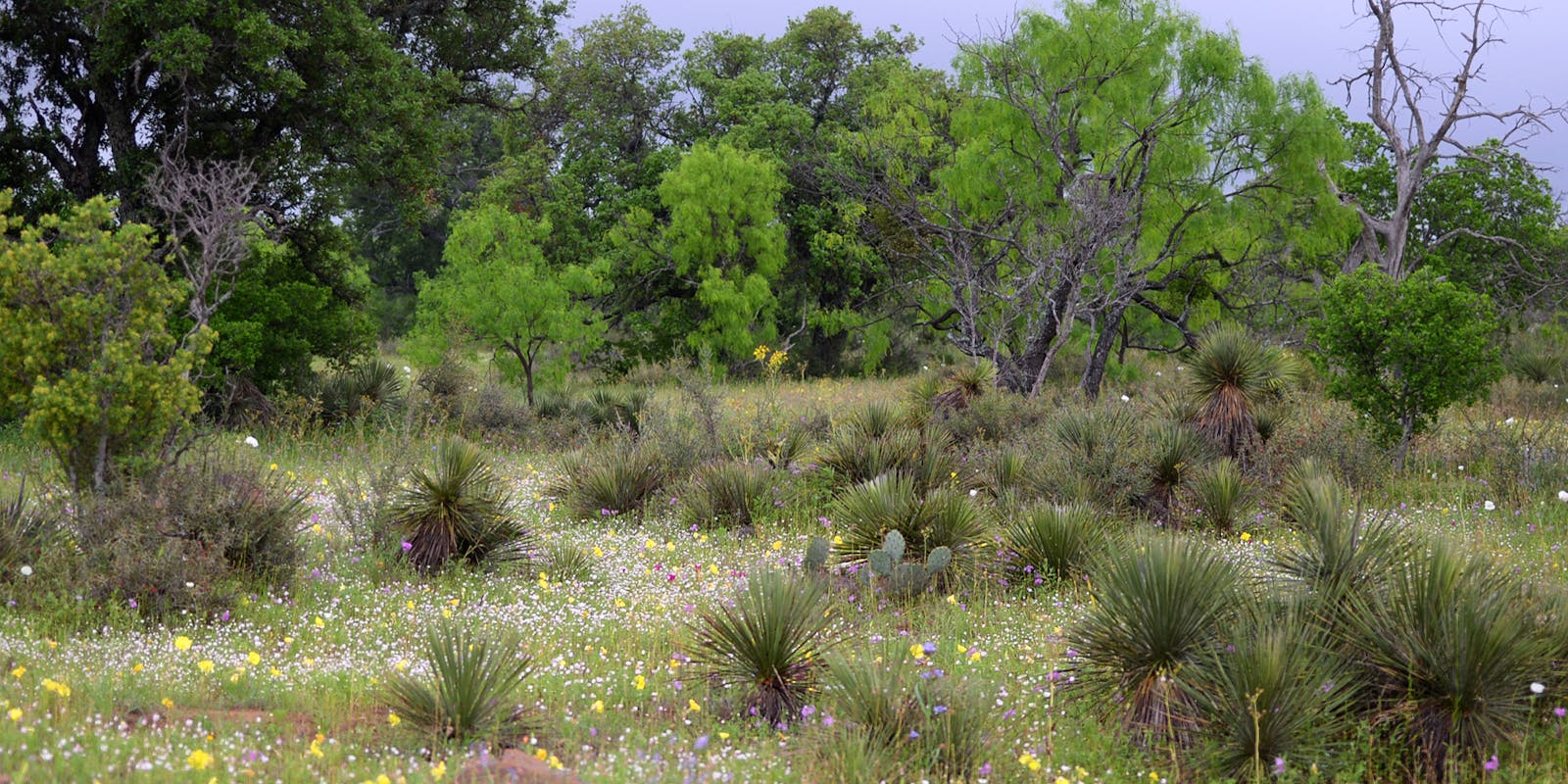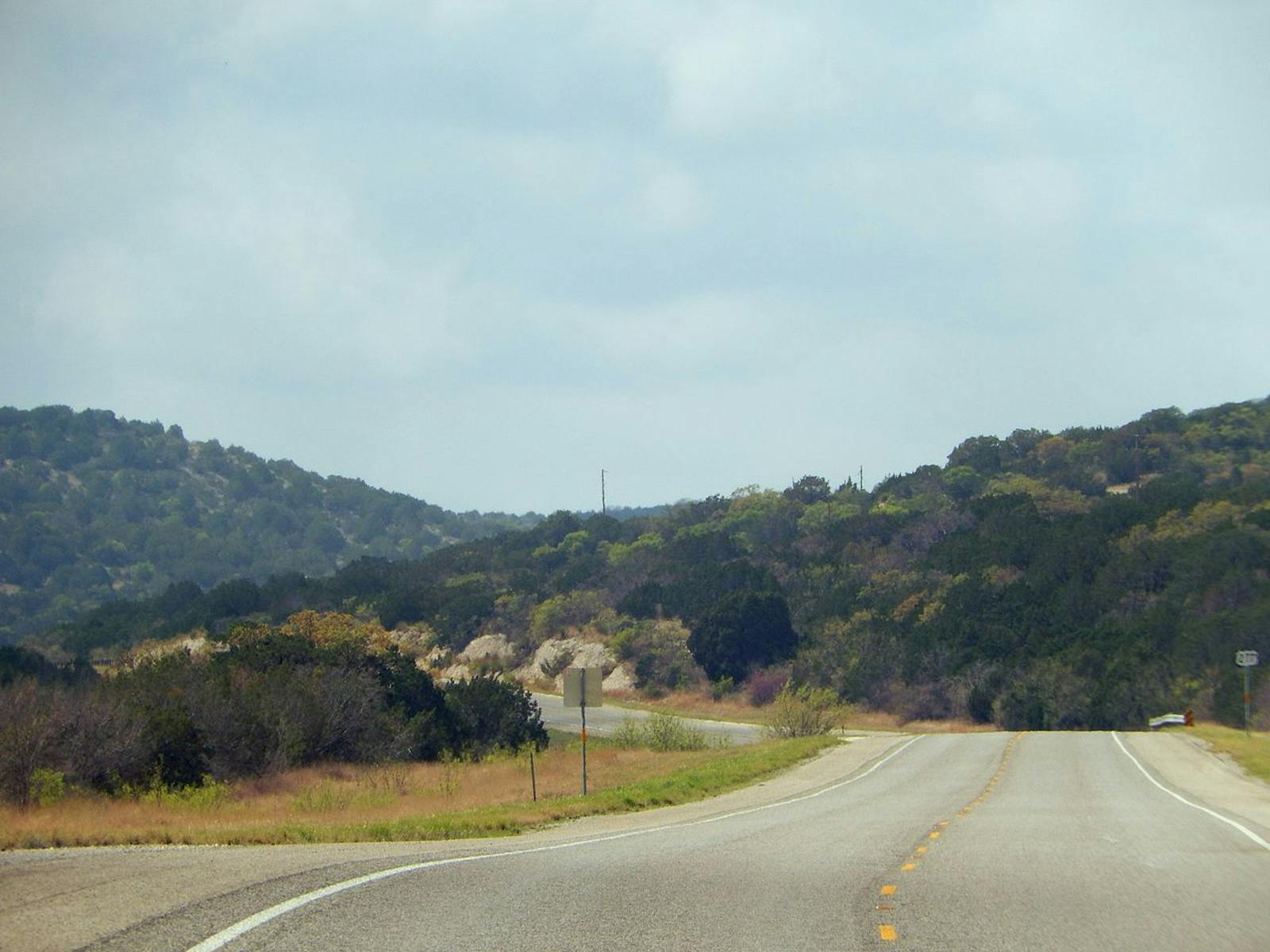Edwards Plateau Savanna
The ecoregion’s land area is provided in units of 1,000 hectares. The protection goal is the Global Safety Net (GSN1) area for the given ecoregion. The protection level indicates the percentage of the GSN goal that is currently protected on a scale of 0-10. N/A means data is not available at this time.
Bioregion: Southern Prairie Mixed Grasslands (NA20)
Realm: Northern America
Ecoregion Size (1000 ha):
7,521
Ecoregion ID:
391
Protection Goal:
68%
Protection Level:
0
States: United States: TX
The Edwards Plateau Savanna – the heart of the famed Texas Hill Country – lies to the west of the Texas Blackland Prairies ecoregion and is bordered on the south by the Tamaulipan Mezquital and on the southwest by the Chihauhuan Desert. Three ecoregions lie to the north: the Cross-Timbers Savanna-Woodland on the northeast, the Central-Southern US Mixed Grasslands on the north-central, and the Western Shortgrass Prairie on the northwest.
Much of the ecoregion is a flattened plateau top, but portions are deeply dissected, such as the along the Balcones Escarpment on the southern and eastern edges, which features scenic steep slopes and cliffs. Elevation ranges from around 152 m along rivers in the east to around 853 m in the western hills. This ecoregion is a global biodiversity hotspot for cave-dwelling animals as well as for many terrestrial plants and some animals. This distinction, combined with the currently low level of protection (<1%) makes it a priority ecoregion for conservation action.

The flagship species of the Edwards Plateau Savanna ecoregion is the Mexican free-tailed bat. Image credit: Bureau of Land Management, Creative Commons
The Edwards Plateau has a subhumid warm temperate climate, grading to subhumid subtropical in the southern portion, with hot summers and mild winters. Average annual rainfall ranges from 330 mm in the west to 860 mm in the east. Cretaceous limestones and dolomites characterize most of the Edwards Plateau and produce a karst topography with abundant sinkholes, caves, and springs. Several of Texas’s major rivers emanate from these springs. Soils are primarily shallow calcareous clays and loams, commonly with limestone outcrops.
The matrix vegetation is juniper-oak savanna or a mosaic of oak or juniper-oak woodland and grassland. Dominant tree species are plateau live oak, Ashe juniper, and Texas red oak, with post oak important on some sites. Shrubs include Texas persimmon, agarito, and Texas mountain-laurel. The grassland component includes little bluestem, side-oats grama, big bluestem, and yellow Indiangrass. Drier grasslands in the western portion feature buffalograss, curly mesquite, tobosa, short grama grasses, and threeawns. In the west, red-berry juniper joins Ashe juniper and replaces it on the edge of the ecoregion. Canyon woodlands are moister and contain cedar elm, Texas red oak, escarpment blackcherry, Arizona walnut, Texas ash, netleaf hackberry, and other trees.
The karstic features of this ecoregion explain much of its outstanding biodiversity. Some of the largest colonies of bats—especially Mexican free-tailed bats—in the world occur here, numbering in the millions. The largest bat colony is in Bracken Cave, near San Antonio. Numerous endemic invertebrates occur in the caves and springs as well as several species of endemic salamanders (including blind salamanders) and many endemic fish. The endemic fish include two subterranean catfish species and 13 fish species associated with springs. Altogether, nearly 100 endemic aquatic animal species and subspecies have been identified in these habitats.
Regarding terrestrial species, the federally endangered golden-cheeked warbler is nearly endemic to this ecoregion in the breeding season, and the black-capped vireo has much of its breeding range here. The Edwards Plateau is also an important center of plant endemism north of Mexico, with around 60 endemic and more than a dozen near-endemic species. These rare plants include Texabama croton, big red sage, canyon rattlesnake-root, Texas largeseed bittercress, bracted twistflower, canyon mock-orange, Texas snowbells, Warnock’s coral-root, and Tobusch fishhook cactus.
Considering the biological wealth of this region, it is shocking that less than 1% is protected. Urban sprawl, especially from Austin and San Antonio, is a serious threat, and much of the ecoregion has already been converted to farmland, ranchland, and urban area. Exotic species, such as King Ranch bluestem, are also a serious problem.
Priority conservation actions for the next decade are to: 1) greatly increase federal, state, and local acquisition of conservation lands; 2) control, and where possible eradicate, invasive non-native species; and 3) increase awareness of the natural history and conservation needs of this ecoregion among the local people.
Citations
1. Poole, J.M., W.R. Carr, D.M. Price, and J.R. Singhurst. 2007. Rare Plants of Texas. Texas A&M University Press, College Station.
2. Ricketts, T.H. et al. 1999. Terrestrial Ecoregions of North America: A Conservation Assessment. Island Press, Washington, D.C.
3. Bowles, D.E., and T.L. Arsuffi. 1993. Karst aquatic ecosystems of the Edwards Plateau region of central Texas, USA: A consideration of their importance, threats to their existence, and efforts for their conservation. Aquatic Conservation: Marine and Freshwater Ecosystems 3: 317–329. doi:10.1002/aqc.3270030406.




